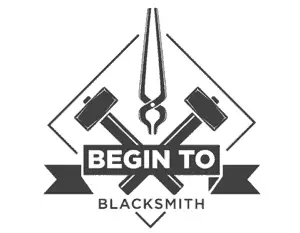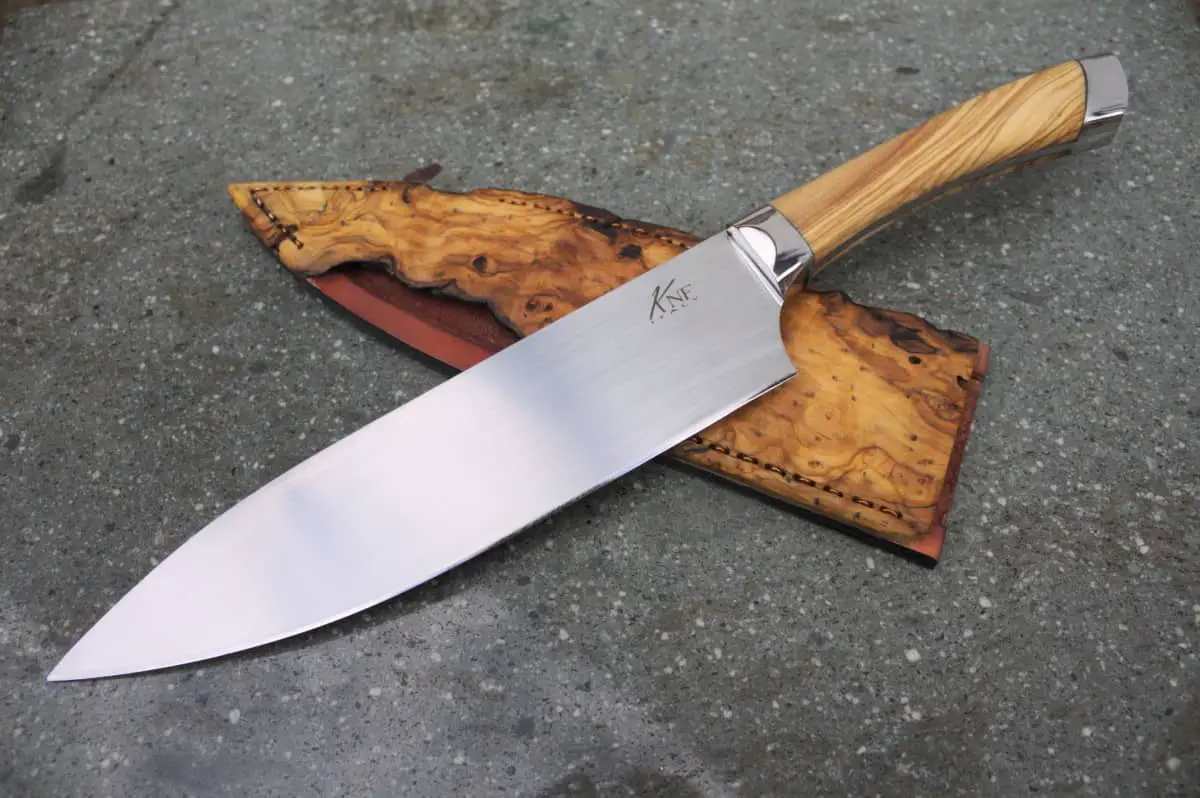Knifemaking is one of the most fun pastimes any blacksmith can get involved in. In many cases, you can make a serious living selling your custom knives on places like Etsy. As such, it shouldn’t be surprising that many beginner blacksmiths want to give knifemaking a shot for themselves.
While this ambition is enviable, the reality is that forging a knife is far from simple. Unlike most basic projects undertaken by beginners, knifemaking takes quite a bit of preparation beforehand. For one, you need to know exactly what kind of knife you want. Then, you need to make your own design, gather the materials, let alone understand exactly how to make the knife itself.
That’s exactly why I recommend beginner blacksmiths work on making a chef’s knife. Besides being much simpler to make than a survival knife, for instance, they are very useful and practical on a day to day basis as well.
In this beginner’s outline, you’re going to find out how to make your very own chef’s knife that you can use every day in your home.
Let’s get started.
Getting the materials
The beauty of creating a chef’s knife is that it’s a lot easier than other types of knives in almost every stage of the planning and forging process. While a lot of survival knives have a separate handle made out of a different material, chef knives are often just made out of a single piece of metal.
There are a few reasons why this is a good thing for beginner blacksmiths. For one, it makes the entire process a lot easier. Instead of having to screw in and install a wooden grip or covering material for your handle, it’s just going to be made out of the same material as your blade. This means there are fewer areas for a beginner blacksmith to potentially screw up.
It’s also cheaper. The only thing you really need for a chef knife is a stainless piece of steel. You really do want to stick with high-quality steel instead of any random piece of metal lying around. Rebar, iron, or anything else won’t really cut it. You want your knife to last you a while. Since you’re going to be using your knife on food that you will eventually eat, you also want your knife to be made out of a completely safe material that won’t accidentally leach potentially toxic compounds into your food.
Just get one high-quality piece of stainless steel, and you’re pretty much good to go.
What equipment will you need?
Considering that this will be a one-piece knife, you don’t need much in the way of equipment either.
Besides the absolute basics, like a hammer, forge, anvil, and a grinding stone, you pretty much have everything that you really need to get started. Having some sort of workbench as well, alongside some sandpaper, files, and other things that can help smooth out the eventual handle of your knife, will be important as well.
In the past, I’ve written articles on how you get started blacksmithing in under $200 if you’re really strapped for cash. If that’s you, feel free to check that article out here. I’ve also written articles about the best forge for beginners if you don’t already have one, as well as the best hammer and anvil types out there as well.
Step #1: Creating your design
This step is pretty much the same for all the more complicated blacksmithing projects out there. Whether that’s making a sword, a knife, or something similar, make sure you have a basic design laid out in advance.
To do this, it helps to actually look at a chef’s knife in advance. Go to your local store and physically hold the kind of knife that you want to make. Take note of its size. Usually, for every 2 inches in blade length, set aside an extra inch for the handle section. A three-inch handle is generally the smallest you going to go for a blade, but a four- or five-inch handle is pretty common as well.
Once you got the rough design of what you want to make in mind, make a basic outline of it on a piece of paper. The idea is that you will be putting this outline against your stock and drawing a basic outline with a pen or pencil.
While this might seem really unprofessional, it’s actually a very useful little trick that has proven extremely helpful for many beginner blacksmiths. Having a rough outline literally of what your metal should look like (roughly) after you’ve finished hammering away is super handy for beginners.

Step #2: The forging process
There’s not a lot that needs to be said about this section. Heat your stock up in your forge until its glowing a bright orange and start hammering away at it. After a couple of dozen strokes or so, reheat your metal and go again.
Throughout the entire process, try your best to maintain a steady rhythm in your hammering. Beginner blacksmiths have a lot to learn when it comes to practicing their hammer strokes, but the best advice I can give to prevent yourself from getting too tired is to maintain a steady pace that you can maintain.
When you start out, your metal is going to be a bit bigger than the dimensions of the chef’s knife that you’ve outlined on the metal. Do your best to hammer your metal down to the rough shape of what you’re looking for.
There are two sections here. The blade, which needs to be hammered down to be quite thin, and the handle, which will (depending on what you want) need to be smoothened out and rounded. Keep these two parts in mind as you work on each end of your knife. It might take a while to hammer out your blade to be as thin as you want it to be but keep at it.
Step #3: Sharpening the blade
After you’ve done all the hammering you think is necessary, the next step is to sharpen and refine the edge of your knife. The best bet here is to use something like a grindstone, or if you have another type of sharpening tool around, you can use that as well.
The good news is that grindstones don’t really need to be that expensive. The old-school whetstone is perfect for what we’re trying to do, although it might take a bit of time. Another alternative is a belt grinder, which might be a bit more expensive, but will save you a lot of time in the long run if you’re thinking about making a lot more knives in the future.
Belt grinders can come in at around $150 on Amazon if you know where to look for them. While maybe not worth it for a complete beginner that wants to make just a couple of knives, seriously, long-term knife forgers are going to want to pick one up for themselves in the future.
Step #4: The handle of the knife
Since we’ve decided that we’re just going to make a one-piece knife, the question of how to make your handle becomes much easier.
Often times, beginners can simply wrap some string or leather strips around the handle to give it a different feeling to it. However, for the sake of this guide, we are going to stick to the basic metal grip of a one-piece chef’s knife.
What you are going to need to do is smoothen out the handle of any jagged or sharp points that still remain after you’ve hammered away at it. Simply take your handle, put it up against your grindstone or belt grinder, and slowly turn your handle while pressing it against the sharpening instrument.
This way, you can slowly grind away and smoothen out your metal to make it better fit in your hand. Do this enough, and you will eventually have a pretty darn good grip. If you find that you don’t like the shape of your handle after everything, you can always try to reheat the handle in the forge and hammer away at it again. However, I’d recommend getting it right the first time.
What else can you do?
If you already have a fair bit of experience, you’re free to experiment with trying some more advanced techniques. Engravings are extremely popular among skilled blacksmiths looking to make their knives look really fancy. While exactly how to engrave something goes beyond the scope of this outline, but its definitely something to keep in mind as your skills as a blacksmith grow.
After finishing these four steps, you might want to take a bit more time to polish and clean up your blade. Sometimes you will have some black discoloration flakes that stick to your blade while it was still hot from the forge. These become almost impossible to remove, and you’re going to need to use a belt grinder or a file to grind them off your blade.
Final thoughts
Forging your own set of chef knives is a fantastic project for a beginner blacksmith looking to improve their skills. Best of all, custom made chef knives can sell for a pretty penny on online sites like Etsy. After you get good enough, you can make a serious side income from selling your practice projects online!
Even if you’re just doing it for fun, knifemaking is an extremely rewarding hobby for any blacksmith. Keep up your practice, and you will eventually astound yourself with what you can accomplish.


